
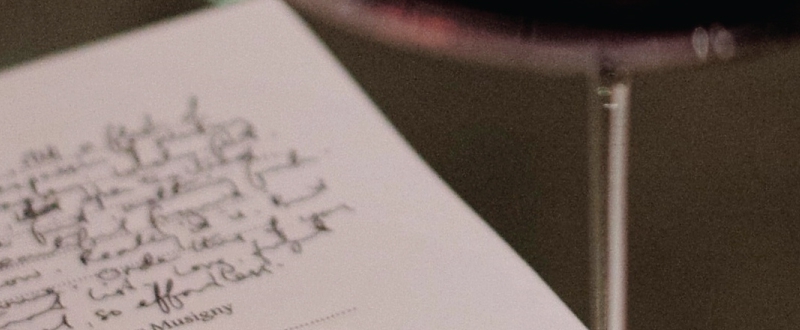
© Alexandria Rae Cubbage, 20th April 2021

In early April, we organized a wine dinner to showcase the top three single-vineyard Barbarescos (‘Costa Russi’, ‘Sori Tildin’, and ‘Sori San Lorenzo’) and Barolo (Sperss) from Gaja from the 1990s and paired them with a specially crafted menu from the culinary team at the Rosewood Hotel and Asaya Kitchen. Here is a bit of background about the legendary Angelo Gaja, his wine philosophy and practices as well as a little history on the vineyards we tasted along with tasting notes on each of the wines. At the end of the night, I asked everyone to vote on their top two favourite wines. The clear favourite of the evening was the 1997 Langhe Nebbiolo Sperss. While we still can’t travel yet, this evening was designed to transport everyone to Piedmont, Italy for a bit to experience one of its top wine producers who has done much to promote and to transform the wines of this great region into ones rivalling the best wines of the world.
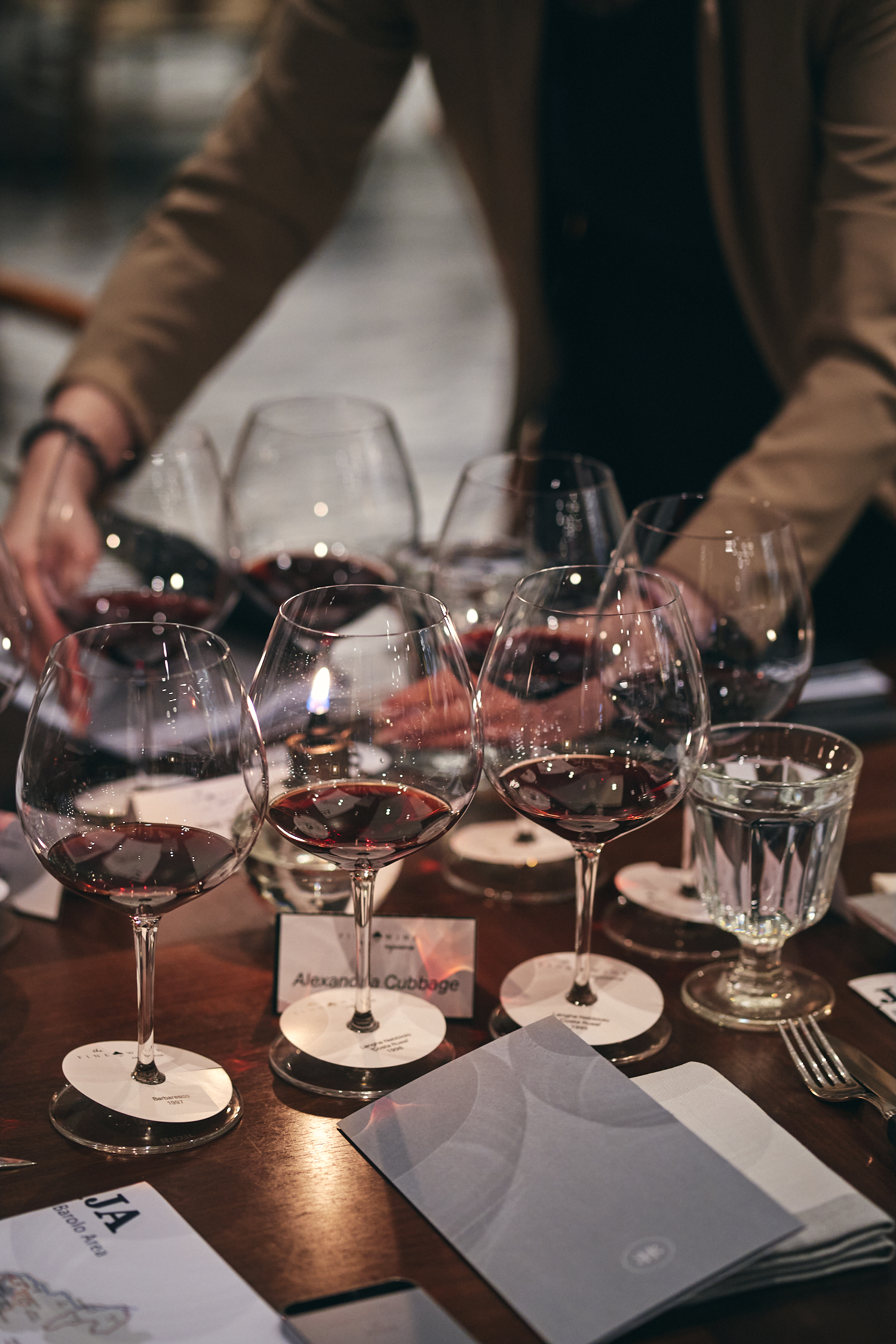
Angelo Gaja is one of the great wine legends of Piedmont, Italy, with an unwavering and passionate commitment to this majestic region. Piedmont has a continental climate with long, cold winters and hot, fairly wet summers. The best soils have a high percentage of clay, marl and calcareous matter; they are thin, so in terms of agriculture they are difficult for growing most things and best suited for growing vines. The most famous grape grown here is Nebbiolo which is naturally tannic, high in acidity and can have fairly high levels of alcohol while being light in colour in the glass. The most famous wines from Nebbiolo come from the regions of Barbaresco and Barolo and due to their firm structure and high acidity are wines best enjoyed with food. The name, Nebbiolo, comes from the word ‘nebbia’ which means fog in Italian. It’s ‘probably referring to the thick, natural bloom covering the ripe berries, as if they were covered in a layer of fog.’ The other theory is that the grape takes its name for the fog that you see in the Piedmont hills when these grapes are harvested. Usually harvest occurs between the end of September to the end of October.
The Gaja family settled in Piedmont more than 300 years ago, arriving in this region from Spain. In 1859, Giovanni Gaja, Angelo’s great grandfather founded the Gaja winery. Today, the primary estate has its vineyards in Barolo and Barbaresco comprising approximately 101 hectares. Since 1994, Gaja also has added vineyards in Tuscany.
The Barbarescos and Barolos of Gaja are special because of Angelo Gaja’s commitment to quality and his own path in producing the best expression of Nebbiolo from Barbaresco and Barolo. For him, from 1996-2011, he felt the single-vineyard wines expressed themselves best with 5-15% of Barbera combined with Nebbiolo. He wanted to give the wines a rounder feel. Thus, he had to declassify his wines to the Langhe Nebbiolo DOC during those years as it went against the DOCG rules or Barbaresco and Barolo. In 2012, Gaja didn’t bottle the single-vineyard crus because he didn’t think the quality was high enough, so he just made a 2012 Barbaresco. Gaja made 2012 Sperss, and that Barolo-sourced wine is labelled as Langhe Nebbiolo DOC. The Barolo DOCG designation returned with the 2013 vintage the same as with Gaja’s top three single-vineyard Barbarescos as they returned to being 100% Nebbiolo. However, Gaja continued making Barbaresco DOCG during this time from 100% Nebbiolo blended from 14 of their estate vineyards located in Barbaresco and Treiso.
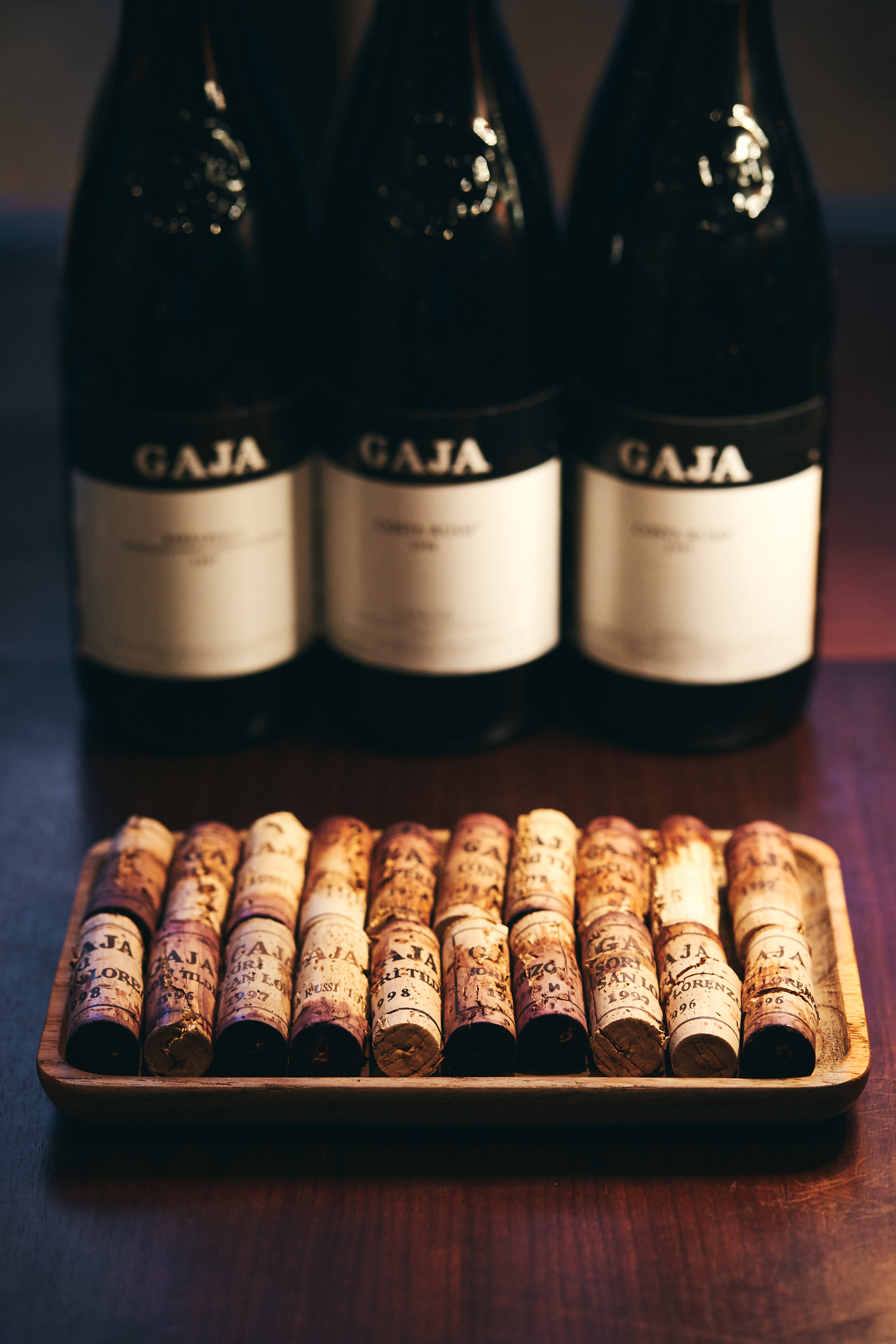
Gaja was also unique in that he was one of the producers who started single-vineyard bottling. During the early days of Barbaresco and Barolo (and still amongst the traditionalists), the practice has always been to blend the vineyards in order to create the best expression of Barbaresco or Barolo. Angelo Gaja was one of the producers who changed that idea.
Angelo Gaja was also part of the modernists’ movement that began in the 1960s and continued on through the mid-1980s. These producers in Barbaresco and Barolo started using temperature-controlled fermentation, shorter fermentation and maceration times, and the use of French oak barrels - 225-litres barriques - for ageing the wines. (The traditional practice had always been to age in large, used Slavonian oak botti). Gaja was the first to age his wines in French barriques. One of the main goals of these producers - called the ‘modernistas’ - was to create wines on par with Burgundy and Bordeaux that would be accepted in the international market. The image of Barolo and Barbaresco by the end of the 1970s was suffering as the wines needed so much more ageing and required opening well in advance of drinking them. Gaja spearheaded the appreciation and acceptance of Barbaresco and Barolo by international consumers. (For additional information on Angelo Gaja and his wines click here to read Linden’s profile on this legendary winemaker).
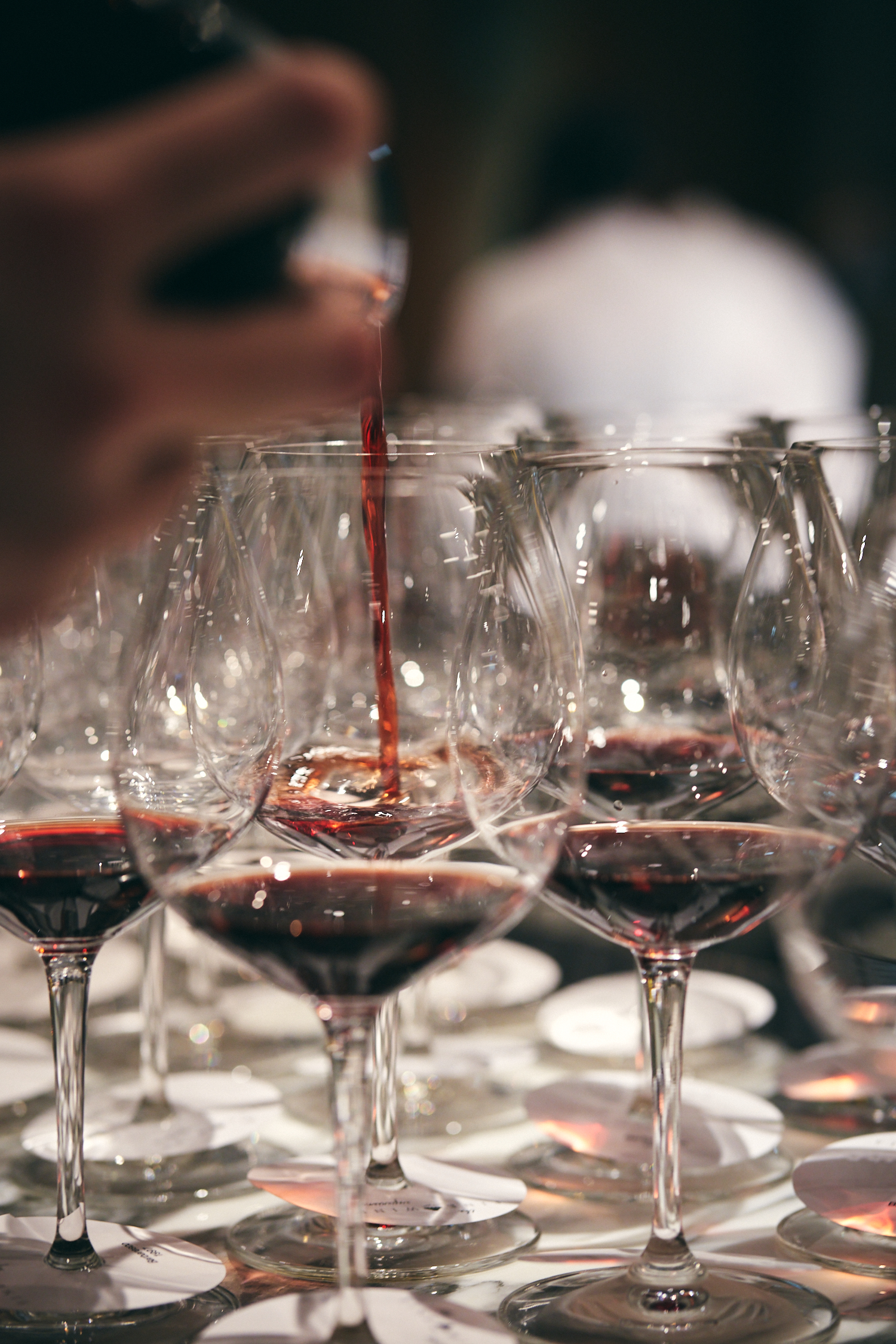
We began the dinner with a flight that included 1997 Barbaresco followed by 1998 Langhe Nebbiolo ‘Costa Russi’ and 1995 Barbaresco ‘Costa Russi’.
1997 Barbaresco
In Robert Parker’s review of the 1997 Gaja Barbaresco in June 2001 for Wine Advocate, he described it as, ‘undoubtedly the finest he has made yet.’ This wine is made from 100% Nebbiolo grapes that are grown in 14 of Gaja’s estate vineyards in Barbaresco and Treiso, so it’s the more traditional blend style of making Barbaresco, rather than from a single-vineyard. In the glass, this wine showed lots of sweet fruit notes that were mainly fresh still with some dried fruit aromas. The fruit was primarily dark in character with dark raspberry aromas and flavours dominating along with sweet baking spices of cinnamon and nutmeg along with vanilla and liquorice. On the palate the fruit was concentrated with the tannins integrated and delivering a rounded feel.
This wine received no votes for top two favourite wines of the night.
The 1997 vintage was significant in Piedmont because of the hot conditions throughout the growing season, especially in July, August and September which produced rich and opulent wines. In an interview with Andrew Jefford of Decanter in 2017, Gaia Gaja said that around 1997 she and her father, Angelo noticed that ripeness was no longer a problem for their Nebbiolo, but they needed to start worrying about freshness and acidity. They were feeling the effects of global warming and needed to rethink their vineyard practices to adapt. Gaia started urging her father to consider biodynamic farming practices, organic farming and the importance of biodiversity in the vineyards. Today biodiversity is a very important part of their vineyard practices, and they are very focused on the concerns posed by global warming and how best to meet those challenges through their viticultural work.
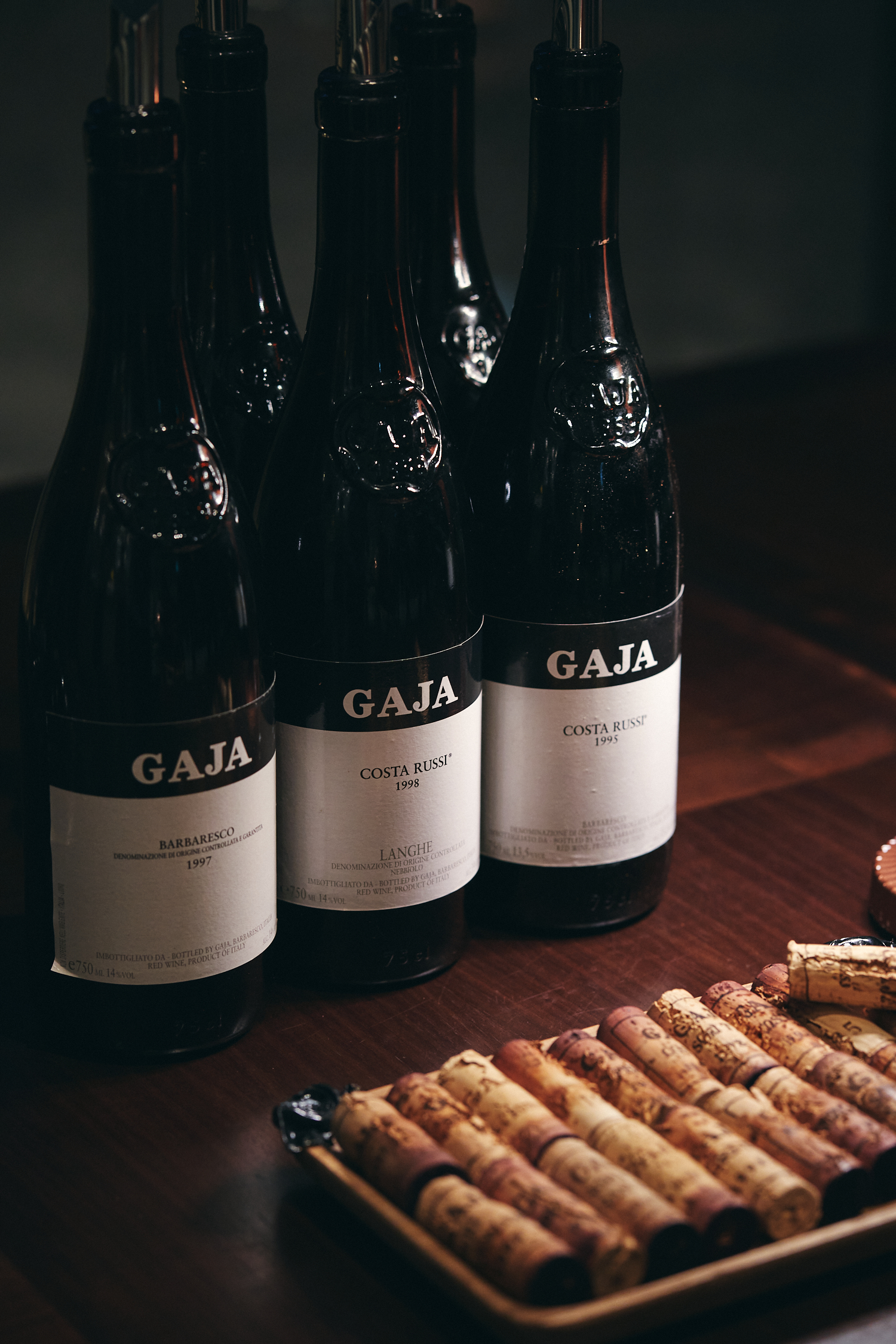
Costa Russi
The single-vineyard Barbaresco ‘Costa Russi’ had its first vintage in 1978. This wine takes its name from the word ‘Costa’ meaning slope and ‘Russi’ which was the nickname of the sharecropper of this vineyard. It’s located right below Sori Tildin within the Barbaresco village and comprises 4 hectares. The vineyard is made up of limestone clay and marl soils with vines that are over 65 years old. It faces southwest, so it isn’t getting direct sun all day. As a result, the wines produced from this vineyard are usually the most delicate and fruit driven of the Gaja Barbarescos.
1998 Langhe Nebbiolo ‘Costa Russi’
For his review of the 1998 Langhe Nebbiolo ‘Costa Russi’, Stephen Tanzer writing for the International Wine Cellar in December of 2002, noted that ‘Costa Russi has been more consistent beginning in 1998.’ Then, he went on to explain that when he mentioned this impression to Angelo Gaja, he said: ‘It’s probably due to the drier weather and more sun; the vineyard is adapting itself to our new, more California-like weather.’
At our dinner, the 1998 ‘Costa Russi’ showed aromas of red fruits, red and dark cherries, green leaf tobacco, liquorice, savoury herbal notes and some gamey aromas. The tannins were still present delivering a drying sensation on the palate with a tart quality to the fruit; this wine was youthful and showing classic aromas and textures of Nebbiolo from Barbaresco. The 1998 vintage in Barbaresco and Barolo is known for structured wines, and we definitely felt it here even though this wine was opened and double decanted three hours before it was served.
It received no votes for favourite wine of the night.
1995 Barbaresco ‘Costa Russi’
The 1995 ‘Costa Russi’ was a sharp contrast to the 1998 with more delicate, nuanced flavours and integrated tannins. On the nose, this wine showed aromas of dried roses combined with fresh mint and dark cherry and raspberry flavours. There was also an earthy character to the wine that reminded me of aged Bordeaux.
This wine received three votes for top two favourite wines of the night.
After the flight of one Barbaresco and two vintages of ‘Costa Russi’ with one showcasing some Barbera in the blend (1998) and the 1995 being 100% Nebbiolo, we moved onto three different vintages of Sori Tildin (1998, 1996 and 1985), another one of Gaja’s most famous single-vineyard Nebbiolos.

Sori Tildin
The single-vineyard bottling of Barbaresco named ‘Sori Tildin’ debuted with the 1970 vintage. Like ‘Costa Russi’ and ‘Sori San Lorenzo’, this vineyard is considered one of the best sites for growing Nebbiolo. It is made up of just a little over 3 hectares. The vineyard faces predominantly south and is known for producing wines of balance. Soils in this vineyard are dense and keep the moisture locked in. This wine takes its name in honour of Clotilde Rey, Angelo’s grandmother, whose nickname was ‘Tildin’. She recommended that they buy up the best Barbaresco vineyards when they were being abandoned after World War II as farmers wanted to move to the city and were no longer interested in making wine. Angelo also describes how Tildin taught him to choose the best locations for the vineyards; she was a strong woman and very impactful on the wines of Gaja.
1998 Langhe Nebbiolo ‘Sori Tildin’
The 1998 ‘Sori Tildin’ showed aromas of truffle, thyme, earthy notes of forest floor combined with ripe dark raspberry fruit. Like the 1998 ‘Costa Russi’ the tannins were felt on the palate with a drying sensation and the firmness of the Nebbiolo conveyed along with a sweetness on the finish.
This wine received three votes for top two favourite wines of the night.
1996 Langhe Nebbiolo ‘Sori Tildin’
This 1996 ‘Sori Tildin’ delivered aromas of ripe dark cherries combined with tar, old leather and damp wet leaves from the forest. There was a lushness to the wine and a rounded texture on the palate. It was the best pairing with the dish which was entitled ‘Wild Mushroom’ and consisted of a double consummé, porcini royale and Hunnan black truffle. Lots of mushroom and earthy flavours in this dish along with richness and those qualities brought out those flavours in the wine while carrying its full-bodied power well.
The wine received one vote for top two favourite wines of the night.
1985 Barbaresco ‘Sori Tildin’
Decanter described the 1985 vintage as, ‘A superb vintage with rich, perfumed wines destined for long ageing.’ This 1985 ‘Sori Tildin’ displayed sweet, perfumed aromas of red and dark cherry fruit that was pure in expression combined with violet floral notes, sweet baking spices including cinnamon with fine-grained tannins and a long finish. This wine was the most elegant of the evening. I’m a big fan of the 1985 vintage for Barbaresco and Barolo and tend to like them more than the more famous, powerful years of 1989 and 1990 because I find more delicacy in the expression of Nebbiolo in 1985.
It received seven votes for top two favourite wines of the night including one of mine.
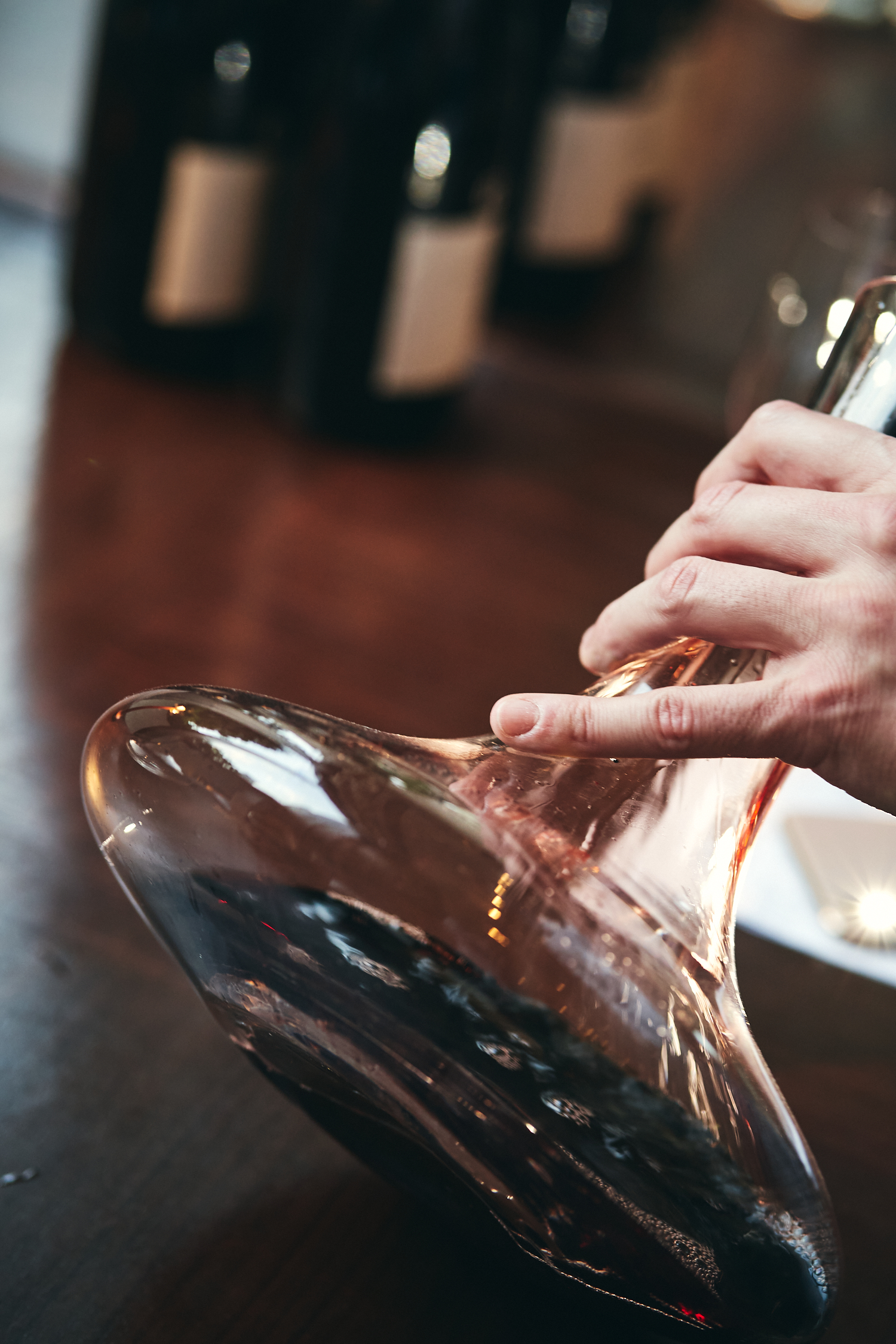
We wrapped up the discussion of Gaja’s three most famous single-vineyard Barbarescos with a flight of Sori San Lorenzo – 1998, 1997 and 1996.
Sori San Lorenzo
‘Sori San Lorenzo’ was the first single-vineyard bottling of Barbaresco Gaja made. This vineyard is located just south of the village of Barbaresco within the Secondine cru. Its first vintage was 1967. The vineyard, ‘Sori San Lorenzo’, was the favourite of Angelo’s father, Giovanni, as he believed it offered the best expression of Barbaresco. ‘Sori’ means the top of the hill that faces the sun and is considered the best site. This vineyard is almost 3 hectares and faces directly south. It is located closest to the Tanaro River valley and feels the impact of the warm air currents from the river; it’s the first to ripen and to be harvested. The soils of Sori San Lorenzo are also very special because of the clay and high concentration of limestone. Some of the oldest vines of Gaja are planted in this vineyard. The wines from the Sori San Lorenzo vineyard are austere in their youth, and the biggest in terms of the structure - tannic and concentrated – in comparison to the other three single-vineyard Barbarescos Gaja makes. Sori San Lorenzo wines require a longer period of ageing than the other vineyards to be ready to enjoy. These wines also tend to be the longest lived of the three single-vineyard Barbarescos.
1998 Langhe Nebbiolo ‘Sori San Lorenzo’
As we shifted to this wine after the 1985 ‘Sori Tildin’, right away the wine’s masculinity showed with more power, meatiness and concentration on the palate. The wine showed aromas of blackberry, plum, dark cherry and dark raspberry combined with roasted coffee and tobacco notes. This wine benefits by having a richly flavoured dish to match and to soften its tannins.
It received three votes for top two favourite wines of the night.
1997 Langhe Nebbiolo ‘Sori San Lorenzo’
The 1997 ‘Sori San Lorenzo’ displayed notes of ripe red and dark berries including raspberries and blackberries combined with vanilla and sweet baking spices of cinnamon and clove. This wine was concentrated, and I felt the alcohol on the palate. Aromatically the wine showed intensity with velvety tannins on the finish which were counter balanced by the richness of the dish that was paired with it - lamb ragout with saffron gnocchi, violet artichokes and candied tomato.
This wine received three votes for top two favourite wines of the night.
1996 Langhe Nebbiolo ‘Sori San Lorenzo’
The 1996 wasn’t as powerful in expression as the 1998 and 1997. And it was less ripe in its flavours than the 1997. The fruit was more red berry and dark cherry fruit with truffles, rose petals and liquorice mixed in.
This wine received no votes for top two favourite wines of the night.
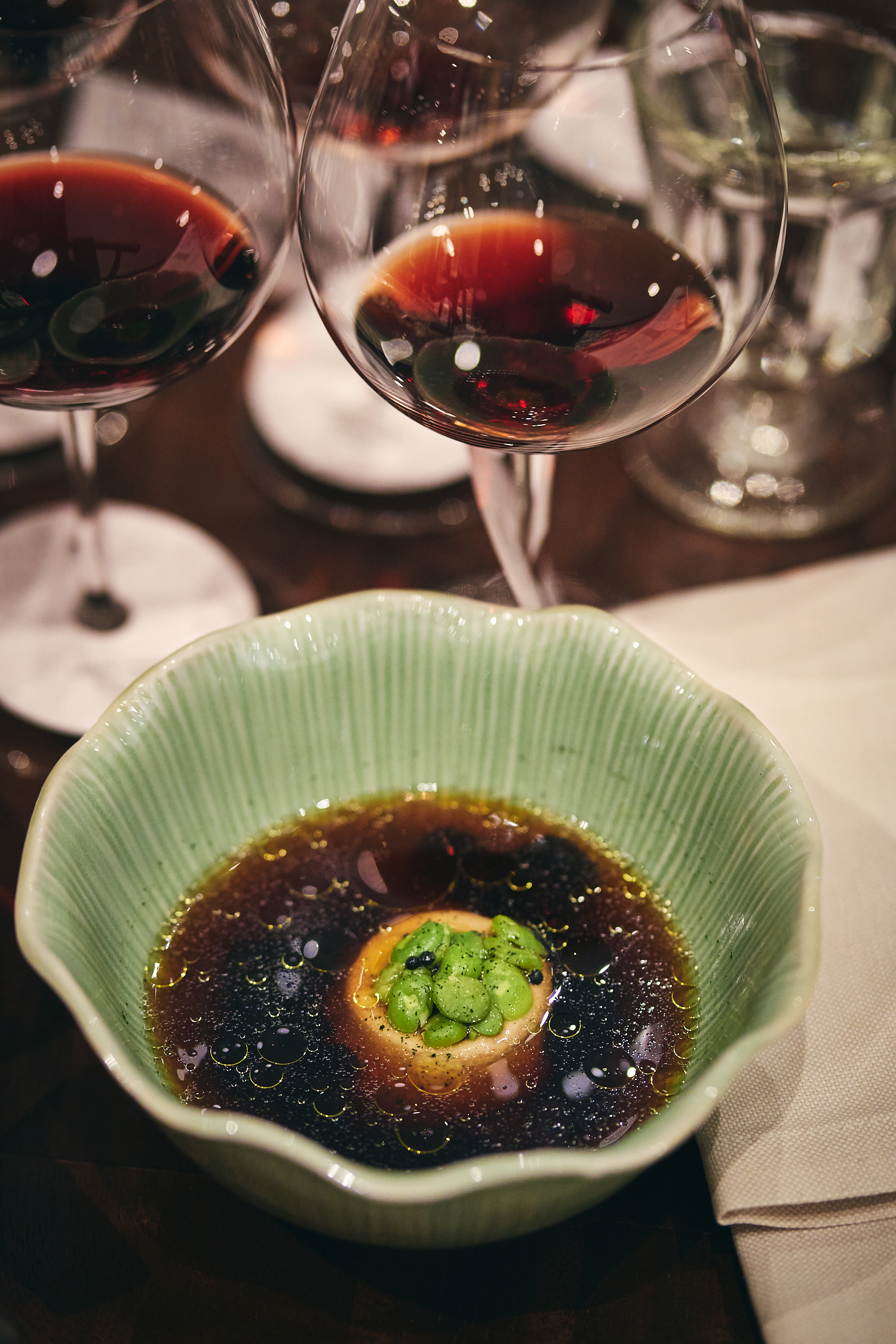
Gaja’s Barolo ‘Sperss’
We also included Gaja’s top vineyard for Barolo – Sperss in the dinner and featured the 1997, 1993 and 1990 vintages. This vineyard was the first one that Gaja purchased in Barolo. In 1961, the family made the decision to no longer produce Barolo from purchased fruit, so they went many years without making a Barolo until the purchase of the Sperss vineyard in Serralunga d’Alba in 1988. It was a bold idea at the time for Angelo to propose stopping production of Barolo, Piedmont’s most famous wine, until the family could produce it from their own vineyards. When Sperss was still owned by Cappellano, Angelo’s father, Giovanni Gaja worked there during harvest when he was 19 years old, so that’s how the family new about this site. Giovanni felt that the vineyard had great potential as he had never seen such lovely grapes and high-quality production. Angelo was able to buy this vineyard finally in 1988 when his father was 80 years old, and that’s why they named it Sperss which means “nostalgia” in Piedmontese dialect. The first vintage of Sperss was in 1989, so the 1990 was the second vintage ever made of this wine and an outstanding one for Barolo. This vineyard is about 12 hectares and is known for producing a Barolo with a firm, tannic structure.
1997 Langhe Nebbiolo ‘Sperss’
As we moved to the Barolo flight, right away the denser character of these wines stood out. The 1997 ‘Sperss’ showed aromas of ripe blackberries, dark cherries, truffle and dark chocolate. On the palate the tannins were present, but the sweet fruit caressed them, so they didn’t stand out as being harsh in character. This wine was powerful and concentrated with years of enjoyment ahead.
It was the overall favourite of the night receiving 12 votes for top two favourite wines of the night.
1993 Barolo ‘Sperss’
The 1993 ‘Sperss’ showed red fruit notes with flavours of red berries including strawberries and red cherries dominating combined with violet floral aromas, herbal aromas of thyme and savoury herbs and a minerally note. There was a cool character to the fruit and a freshness and vibrancy still there but there were also dried fruit aromas; it was the most developed wine at the dinner. This wine was less powerful and ripe than the previous wines with the tannins less pronounced. 1993 was an irregular vintage for Piedmont because of the cold conditions of the winter and rainy periods throughout the growing season. The wines tend to lack structure.
It received three votes for favourite wine of the night.
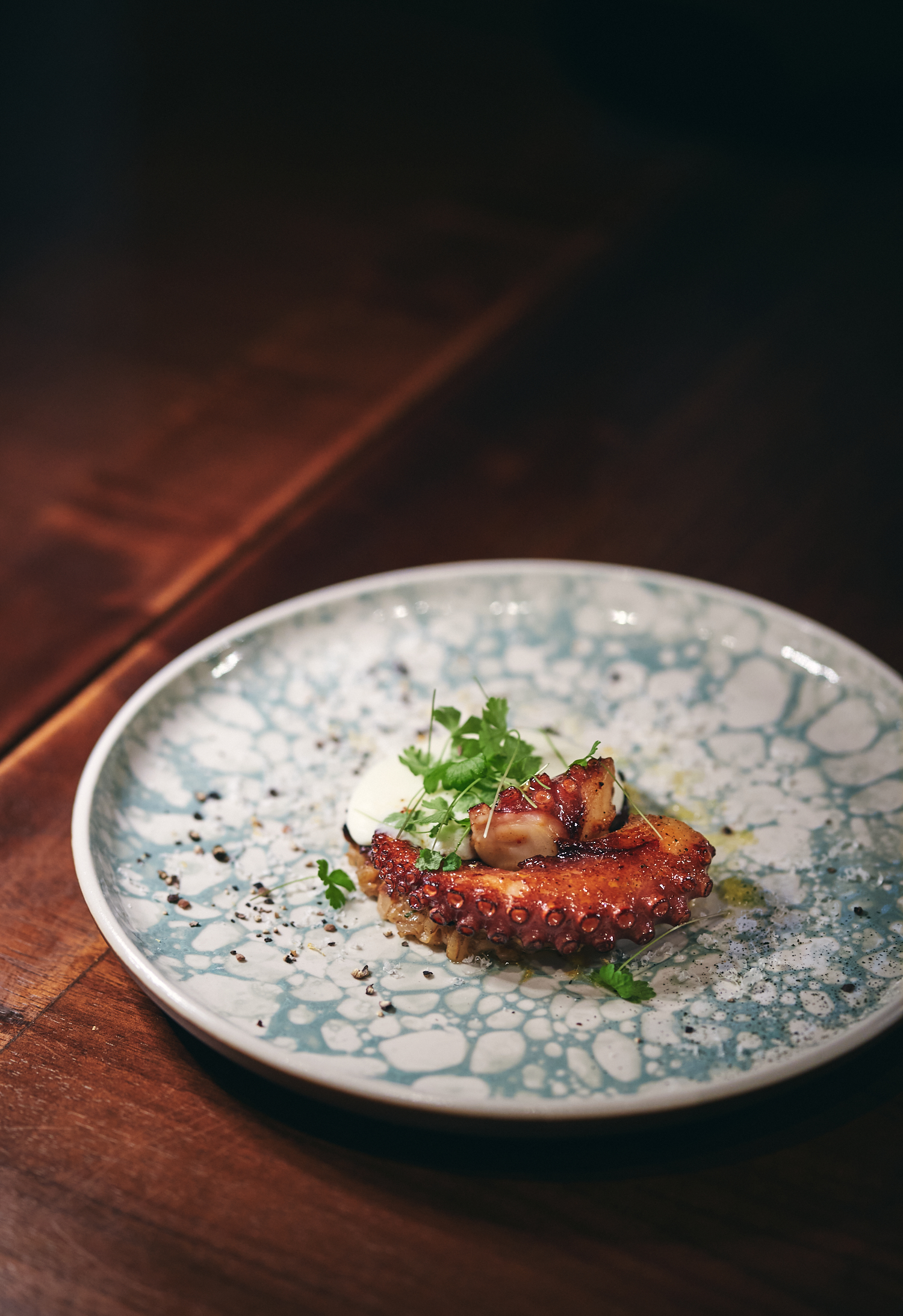
1990 Barolo ‘Sperss’
Wine writer, Antonio Galloni, described this vintage as follows, ‘In many ways, 1990 is the vintage that brought Piedmont onto the world stage because for the first time the wines appealed to a broader public.’ The hot weather of 1990 produced wines that were ripe with generous fruit character like Piedmont had never experienced before. Nebbiolo’s strong tannins and high acidity were mellowed in the Barolos and Barbarescos from 1990 by the ripe, sweet fruit notes and lush concentration produced by the vintage.
The 1990 ‘Sperss’ showed aromas of dark cherries, exotic spices, dried roses, and a hint of tar. This wine was concentrated and still showing structure and freshness even at 31 years old.
The 1990 received six votes for top two favourite wines of the night.
As we journeyed through this dinner exploring Gaja’s top single-vineyard Barbarescos and Barolos from the 1990s with one 1985, what we learned was how much these wines shined in the very warm vintages like 1997, 1985 and 1990. On the whole, the 1998s still seem to need time with the tannin structure featuring prominently in them. And we also saw how these wines are very much ones for pairing with the hearty dishes of Northern Italy’s Piedmont region, the stunning Langhe hills where these wines come from.
Thank you to the culinary team and service staff of the Rosewood Hotel and Asaya Kitchen for creating a thoughtful menu and atmosphere for experiencing these wine from Angelo Gaja. These aren’t shy wines for sipping on their own; they are big and powerful and need food alongside them.
If you’d like to experience Gaja’s top single-vineyard Barbarescos and Barolos, we have some for you to try too on our list below. Try these wines with a rich piece of meat, a hearty pasta dish with lamb ragu or a rich stew like osso buco, so those tannins have something to sink into to take them on and to create a more rounded feel on your palate. The journey into the fine flavours and textures of Barbaresco and Barolo is one I encourage you to take and starting with the examples from the legendary Angelo Gaja is a good place to start.
